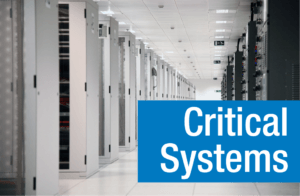 The foundation of the internet where one would find the densest concentration of connectivity and carriers has traditionally resided in the major cities like New York and San Francisco.
The foundation of the internet where one would find the densest concentration of connectivity and carriers has traditionally resided in the major cities like New York and San Francisco.
Major colocation services in these areas utilized these cross-roads of fiber to allow for customers to interconnect and exchange data traffic for nearly all internet users, however the local companies and populations tended to experience the greatest benefit. With an increasingly data hungry world, edge data centers aim to provide the same service to the tier two cities such as Jacksonville and Las Vegas.
Edge data centers are aptly named as they operate at the edge of these dense internet hubs. While the infrastructure of internet has grown and built up in the world’s major cities, the explosion of cloud based software and streaming services has created the need to improve connectivity and capacity closer to their user base.
Edge data centers are differentiated from their competitors mainly by size and location. Typically they are smaller data centers located along fiber highways that connect the major cities and internet hubs. They are located near smaller cities and towns, allowing for an exchange of traffic in a local hub, as well as hosting hardware from the largest content delivery networks such as Netflix and Google. Combining the hosting hardware and closer connectivity helps reduce latency and data congestion by bringing the content delivery networks closer to the end user. Currently, these markets are served from the nearest major telecom city, but the increase in traffic has demanded expensive infrastructure upgrades to increase in bandwidth between these cities, making transmission of that data more costly.
The CCO of a major edge data center provider defines his products as data centers that provide 80% of the internet’s content to 50% of their markets’ broadband users. This is achieved largely through providing an environment where companies with major data center streaming needs such as Netflix, Google, Akamai, Facebook, Apple, and Amazon can locate a small amount of hardware where it would have not been cost effective to build an enterprise level data center. In an increasingly bandwidth hungry world, bringing the main content on the internet to these smaller markets saves ISPs significant cost in transport fees in addition to providing a more stable, consistent service to their customers.
As the use of the internet and live data streaming services continue to expand and become more important in our lives, the need to bring the hardware and connectivity closer to the end user will grow. Data centers that are living on the “edge of the internet” in 2016, will be hubs in just a matter of years. As long as the internet’s services continue to grow, its edge will keep moving, and so will it’s need for local data centers.
Have a question for our experts? Leave your comment below and check out our website for more information.






